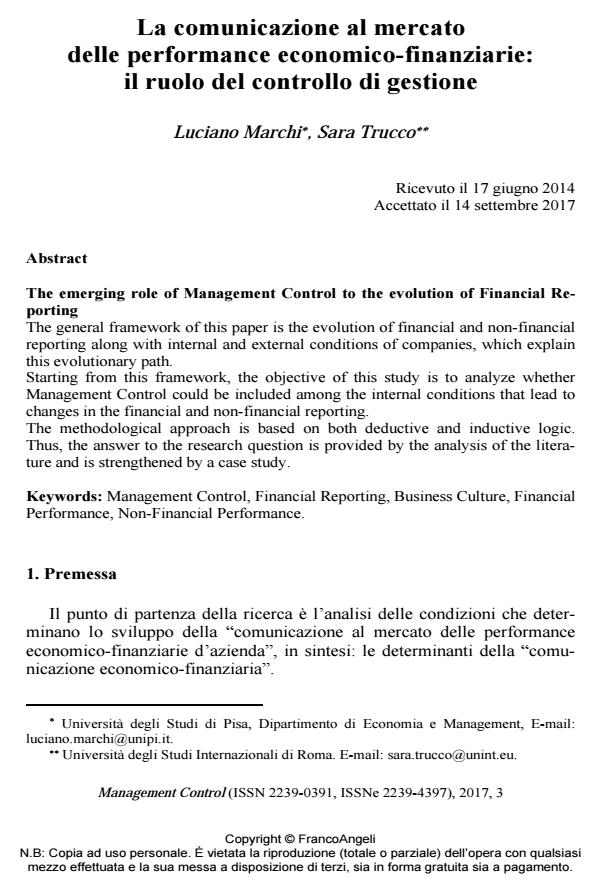La comunicazione al mercato delle performance economico-finanziarie: il ruolo del controllo di gestione
Titolo Rivista MANAGEMENT CONTROL
Autori/Curatori Luciano Marchi, Sara Trucco
Anno di pubblicazione 2017 Fascicolo 2017/3
Lingua Italiano Numero pagine 24 P. 55-78 Dimensione file 280 KB
DOI 10.3280/MACO2017-003005
Il DOI è il codice a barre della proprietà intellettuale: per saperne di più
clicca qui
Qui sotto puoi vedere in anteprima la prima pagina di questo articolo.
Se questo articolo ti interessa, lo puoi acquistare (e scaricare in formato pdf) seguendo le facili indicazioni per acquistare il download credit. Acquista Download Credits per scaricare questo Articolo in formato PDF

FrancoAngeli è membro della Publishers International Linking Association, Inc (PILA)associazione indipendente e non profit per facilitare (attraverso i servizi tecnologici implementati da CrossRef.org) l’accesso degli studiosi ai contenuti digitali nelle pubblicazioni professionali e scientifiche
The general framework of this paper is the evolution of financial and non-financial reporting along with internal and external conditions of companies, which explain this evolutionary path. Starting from this framework, the objective of this study is to analyze whether Management Control could be included among the internal conditions that lead to changes in the financial and non-financial reporting. The methodological approach is based on both deductive and inductive logic. Thus, the answer to the research question is provided by the analysis of the literature and is strengthened by a case study.
Parole chiave:Management Control, Financial Reporting, Business Culture, Financial Performance, Non-Financial Performance
- The Going-Concern-Principle in Non-Financial Disclosure Rosa Lombardi, pp.1 (ISBN:978-3-030-81126-6)
- The Going-Concern-Principle in Non-Financial Disclosure Rosa Lombardi, pp.79 (ISBN:978-3-030-81126-6)
- Management control systems in the knowledge economy: Assessing the role of intellectual capital in Federica Ricci, Vincenzo Scafarto, Salvatore Ferri, Teresa Riso, in MANAGEMENT CONTROL 3/2020 pp.17
DOI: 10.3280/MACO2020-003002 - Controllo di gestione e relazioni intraorganizzative: la prospettiva del controller Oppi Chiara, Vagnoni Emidia, Cattaneo Cristiana, Galizzi Giovanna, in MANAGEMENT CONTROL 3/2024 pp.155
DOI: 10.3280/MACO2024-003008
Luciano Marchi, Sara Trucco, La comunicazione al mercato delle performance economico-finanziarie: il ruolo del controllo di gestione in "MANAGEMENT CONTROL" 3/2017, pp 55-78, DOI: 10.3280/MACO2017-003005